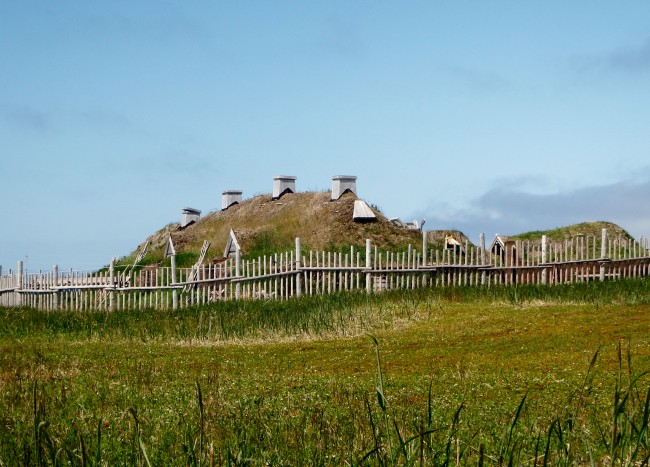In the early 1960’s, Norwegian explorer Helge Ingstad and his archeologist wife Anne Stine Ingstad discovered and commenced excavating the first and so far only confirmed Viking settlement in North America outside of Greenland. How did they do it? Well pretty much the same way anyone motoring around Newfoundland at the time got their bearings…they followed a map to the place labelled Vinland on the Great Northern Peninsula near present day St. Anthony.
To be fair, the Ingstads were using the 1579 Skalholt map which is probably a little less detailed than modern road maps. However Newfoundland’s Great Northern Peninsula is clearly defined and at the proper latitude, aligned with the British Isle for anyone to see. Vinlandia is also clearly labeled on the map, just to avoid confusion with any other Viking settlements one might stumble upon.
 It actually took a great deal of effort for Helge Ingstad to track down the site, to which he was eventually led by Newfoundlander George Decker. The low mounds near Decker’s home were referred to by locals as “The Old Indian Camp”. In fact some of the artifacts here were remnants from what the Vikings called Skraelings, the first nations people who also inhabited the area at various times. But other intriguing artifacts proved that bona fide Norsemen had live here around the year 1000, the traditional date associated with the settlement of Vinland.
It actually took a great deal of effort for Helge Ingstad to track down the site, to which he was eventually led by Newfoundlander George Decker. The low mounds near Decker’s home were referred to by locals as “The Old Indian Camp”. In fact some of the artifacts here were remnants from what the Vikings called Skraelings, the first nations people who also inhabited the area at various times. But other intriguing artifacts proved that bona fide Norsemen had live here around the year 1000, the traditional date associated with the settlement of Vinland.
Though findings were sparse a ringed pin of bronze and a small spindle whorl showed that Europeans had once inhabited the area, women as well as men because no Viking warrior was likely to take up spinning which was generally assigned to the lady folk.
The artifacts are on display at the Parks Canada Interpretation Centre. Afterwards visitors should hike to the reconstructed Viking settlement where period costumed local residents do an uncannily good job of evoking the Viking ethos. Feel free to grab a Viking broad sword, shield and helmet for photo ops…or perhaps an impromptu duel. I would suggest using the light well balanced battle ax over the sword.
The site is not only of historic interest but is set on a beautiful though rugged section of Newfoundland’s coast line. Gulls on the nearby beach cried shrilly overhead. Although the temperature was only 9 degrees Celsius, despite it being July, the sun shone brightly and dozens of wildflowers graced the barrens surrounding the settlement. A large offshore iceberg glistened in the distance. The sharp eyed will usually spot a humpback whale or two breaching in the distance feeding on schools of capelin, a small tasty fish which throws itself onto beaches in early summer by the tens of thousands to breed.
To be honest, things probably didn’t look much different when Thorfinn Karlsefni landed here a millennium ago.
If you go, check out:
L’Anse aux Meadows National Historic Site
Photo Credits
All photos by George Burden – All Rights Reserved





Please Share Your Thoughts - Leave A Comment!